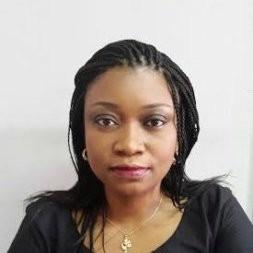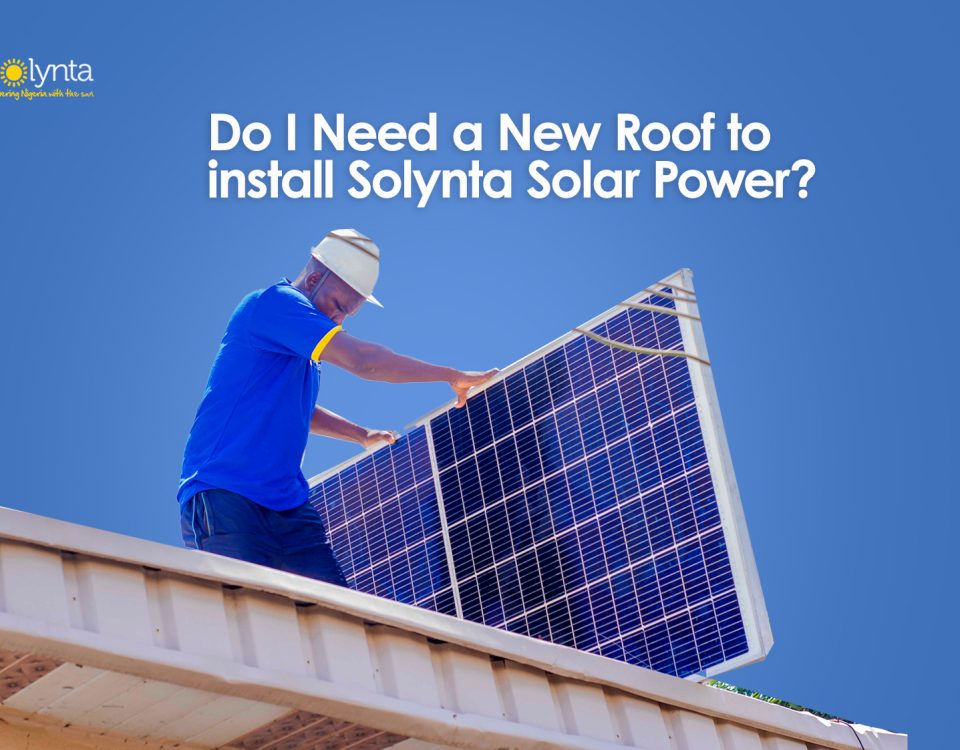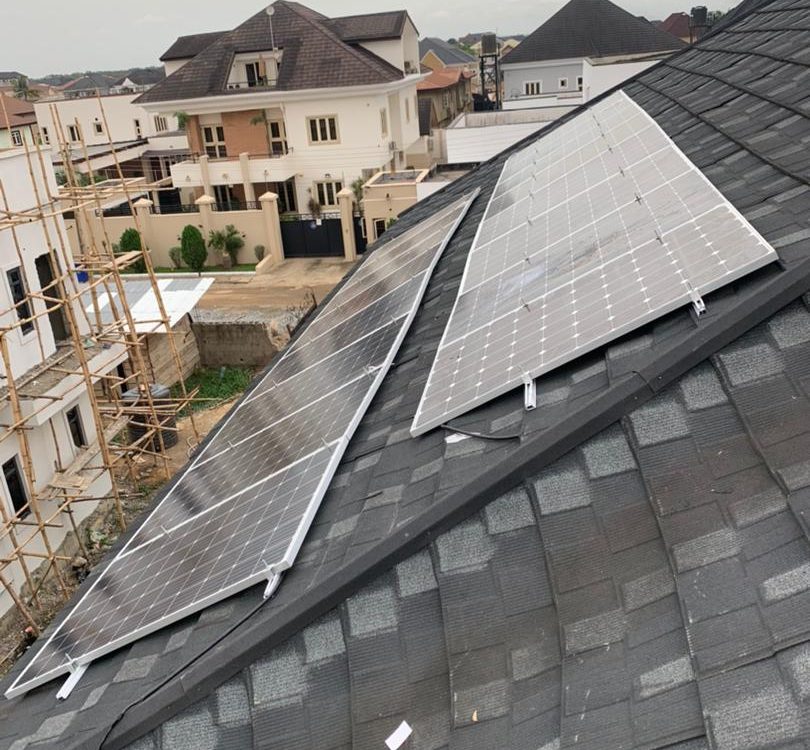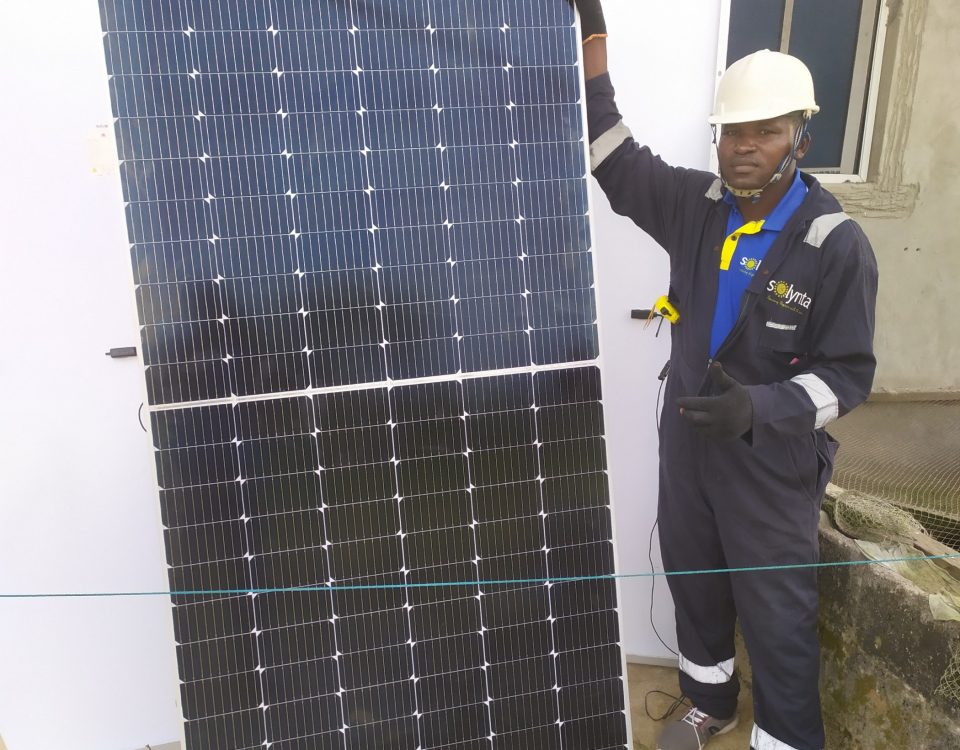Exclusive interview with Ifeoma N. Malo

Solynta Energy partners with UK Charity to Power Private Schools in Lagos
2020-07-18
Saving Energy While Working from Home
2020-07-23Thank you for reading this post, don't forget to subscribe!
A former senior advisor to the Minister of Power in Nigeria and Country Campaign Director for Power For All in Nigeria, she now heads up the Clean Tech Hub Nigeria which she co-founded. Ms Malo is also a regular speaker at Future Energy Nigeria in Lagos
“In 2014, 265 young girls in Chibok were kidnapped from their schools during study period. The reason they were kidnapped in such high numbers is because they did not have electricity. Energy is tied to everything. It is tied to security, agriculture, education and infrastructure. So my goal is really to build sustainable energy technologies in rural communities using renewable energy and mini grids.” – Ify Malo
Let’s start with some background on the Clean Tech Hub Nigeria…
Clean Technology Hub is a pioneering hybrid hub for the research, development, demonstration and incubation of clean energy ideas, technologies, and resources for clean energy organizations and environment and climate friendly initiatives across Africa. At the hub we also work towards supporting these companies for validation for commercial stage and/or sustainable development.
The hub is an early start-up incubator for inventions and innovations in clean energy, a consultancy for sustainability and energy efficiency and climate friendly solutions for organizations and businesses, a hybrid research and data driven firm, and a driver of clean energy investments into Africa. Clean Tech Hub is focused on increasing clean sustainable technologies across Africa and using it to empower citizens and communities towards building a sustainable well-being economy.
Any specific projects that you are involved in currently that you are particularly excited about?
There are several projects at the hub that excite us and give us life, particularly those around people and partnerships, or those that drive innovation and socio-economic impact. There are over 600 million people on the African continent still living in energy poverty, and as Africa’s population continues to grow, so does her need for energy access.
A program such as our Tech meets Renewable Energy project is one of several initiatives looking to tackle Africa’s perennial energy poverty by using technology to advance and accelerate the spread of energy access in hard to reach communities or to reach those on the margins of society. However, we have supply end bottlenecks around project and program development that can accelerate clean technologies into the hands of people.
The “Tech Meets Renewable” project has birthed an enterprise development program at Clean Tech Hub that supports new entrepreneurs and new ideas around unlocking new supply chain opportunities in the off grid electricity sector. The program is also pivotal to addressing the increasing energy access demands across the continent.
Another program that excites us is our gender and MSME programs – where utilizing a “gender and business lens”; women owned and women led MSMEs are central to closing the energy poverty gap by empowering them with clean energy products and services to increase their business offerings and their savings.
This MSME project has proven more cost effective in the long run because it has increased the rate of adoption of clean technology, and is helping to sustain thousands of small businesses, where women small business owners are becoming adopters of this technology to grow their businesses.
Another very important project that we are working on at the moment has us partnering with the National Renewable Energy Associations (NREAs) across West Africa to remove the taxes and tariffs associated with solar technologies and working with a coalition of partners to push for the adoption of the ECOWAS Common External Tariffs (CET).
As a result of the increase and arbitrary charges around VAT and customs duties, solar technologies have become more expensive and thereby out of reach for many across the sub-region. These tariffs and taxes have become a huge deterrent towards achieving SDG Goal 7 which seeks to create access to affordable, reliable and clean energy for all by the year 2030.
Therefore, working with the NREAs and institutional partners including the Global Off Grid Lightning Association (GOGLA) and Ecowas Centre for Renewable Energy and Energy Efficiency (ECCREE); Clean Technology Hub is developing action plans to accelerate the market by urgently eliminating market barriers fiscal barriers, and advancing quality assurance, consumer protection, and developing policy frameworks to unlock demand and supply based bottlenecks.
These are some of the projects we are involved in at the moment and they cover the gamut from the policy and advocacy, to actual project development, business strategy and incubation for the off grid sector, enterprise formation support and project financing initiatives.
How optimistic are you about renewable energy being adopted on a large scale in Africa?
There is the popular opinion often expressed that states — “Renewable Energy is the new oil and gas” – This is because there is a lot of traction globally in the renewable energy industry and even more so across Sub-Sahara Africa. We see how these projects; ideas and initiatives range from the large PV type projects to mini grids and micro grids, Stand-Alone Home Systems and the small Pico solar technologies.
We see that people and communities are realizing that they don’t have to wait for electricity from the grid, and that renewable energy is a viable option for their businesses. Important to note that this not just limited to solar, because we see large projects around wind, biomass, mini-hydross gaining traction as pathways to electrification.
Kenya recently launched in March 2019, a 310 MW facility – The Lake Turkana wind power project – while the Grand Inga project on the Congo River has a projected capacity for 40 GW of hydro generating capacity, (the largest hydro project worldwide) and with the current Inga 3having a total potential of 7.8 GW. (World Bank, 2014a).
Ethiopia also has ambitious plans for hydro-power expansion, including electricity delivery to neighboring countries with – The Great Millennium Renaissance Dam currently under construction with the capability of adding a further 6GW to the Ethiopian national grid.
Nigeria also has a target of 13W of off-grid solar power driven largely through her Rural Electrification Agency’s mini grid revolution; Ghana is also leading in the adoption of solar dryers to improve its agricultural produce at its Silwood Farm. The Senegalese government has inaugurated the first large-scale wind farm in West Africa – to supply nearly a sixth of the country’s power and prevent the emission of 300,000 tonnes of carbon dioxide annually.
Important to mention that South Africa’s Solar Water Heating Rebate Programme has also led to the development of the solar water heating installation and its expansion from a mere 20 suppliers in 1997 to more than 400 in 2011 and has since recorded more than 122,000 systems rolled out, resulting in energy savings of approximately 60 GWh/yr.
Worthy of note also is the renowned Solar Sister job creation initiative, where through their portable solar lights for female entrepreneurs, they have reached 1.5 million people and households in Africa with clean Energy. With these advancements, there is cause for optimism that the adoption of Renewable Energy on a large scale is highly achievable whether it is through off grid electrification, rural electrification or large utility scale electrification.
What is Nigeria doing right at the moment?
Nigeria can be applauded for its robust policy and regulatory environment in the Renewable Energy sector– starting from from the mini grid regulation to the power sector investment brief to the mini grid investment brief. Also, worthy of mention is the ongoing work championed by REA, Rocky Mountain and World bank to drive productive use in Agriculture for Mini Grid clusters as well as the Interconnected Mini Grid Acceleration Scheme (IMAS) implemented by the REA.
The IMAS scheme aims to provide a minimum of 15,000 customers including residential, public, commercial or productive users across Nigeria with access to reliable electricity services at an affordable tariff and by using local mini grids companies to champion this by the end of September 2020. The Energizing Economies Initiative(EEI) and the Energizing Education Program (EEP) have also been put in place to increase energy access and economic growth by providing clean, reliable and affordable power to economic clusters across Nigeria.
Furthermore, there has been progress in the Federal Government’s role in stemming the tide against the deadly COVID-19 pandemic. The Nigerian government was able to achieve through an inter-agency collaborative framework involving the Ministry of Health and the REA to provide four completed solar hybrid mini grids to national hospitals in Abuja, Lagos and Ogun state.
Lastly is the increased investments into the RE sector with private companies like All On leading the way with its COVID-19 Solar Relief (CSR) Fund that provided selected off- grid energy companies with funding for to provide solar power for emergency health covid19 isolation centers. Further to this support was the decision of All On as an impact investor to support moratorium on loan interest repayment to help cushion the effect on interest payment on current interest-bearing investments on investees impacted by the COVID-19 pandemic.
In your view, how critical is the productive use of energy to mini-grid development and sustainability?
No doubt – the under-utilization of several existing mini grids across Africa makes it difficult for developers to recoup their investment, or raise further capital to accelerate or scale their businesses. In most cases, the productive use of these Mini Grids fall short of expectation post installation, with underutilization often put at less than 50% in communities where installed.
In Nigeria for example, the Rural Electrification Agency (REA) is focused on productive economic uses and the social value of energy systems, particularly at the rural community scale. This is in order to improve agriculture, education, health, entrepreneurship, and other aspects of local economic development. This is why the agency for instance is focused on integrated rural electrification energy planning that aligns strongly with productive usage through small agro farming, cottage industries and small-scale manufacturing and technologies that can be powered by mini-grid electrification.
The Nigerian Rural Electrification Agency sees the Productive Use of Energy (PUE) as contributing to an increasing demand and increasing revenue for developers and the consumers, thereby making them economically viable and attractive.
Beyond mini grids, there are also a number of stand-alone technologies including solar irrigation pumps, solar welding kits, etc. that can increase incomes for off-grid residents, and strengthen their capacity to pay their electricity bills. While a number of stakeholders have embraced the idea of promoting productive use appliances, there are still significant
challenges with widespread adoption and financing appliance acquisition. These are the hurdles that we have to cross to make these technologies viable. We definitely need integrated planning where we identify economic clusters and work more closely with MSME cooperatives and their associations as well as agricultural cooperative groups to get most of these mini grids viable.
In a recent GIZ study, small businesses were found not to always connect to the grid due to the fact they are made to pay far more through estimated billing than their actually consumption. The study also found that electricity connections and usages do not necessarily translate into higher profits for entrepreneurs, especially where there are no business trainings to support those entrepreneurs on both usage of these technologies, or there are minimal business strategies to increase their market base and revenue.
This is believed to be one of the biggest stumbling blocks to the achievement of SDG7 within this thematic area – and this is why calls for moving the conversation beyond provision of electricity for lightning to productive use communities is seen as critical to achieving truly meaningful development outcomes through business support services – a factor that is hugely critical to sustainability.
There is definitely a growing merger of opportunities towards utilizing mini grids for agricultural, commercial and industrial activities as a direct input into the production of goods or provision of services that generate income, increase productivity, enhances diversity, and create economic value.
The goal is to have productive use of electricity to be targeted at economic clusters, particularly MSMEs and provide those business support trainings and services that will help to optimize the electricity generated more efficiently.
Read more :https://bit.ly/2OGOiu3




